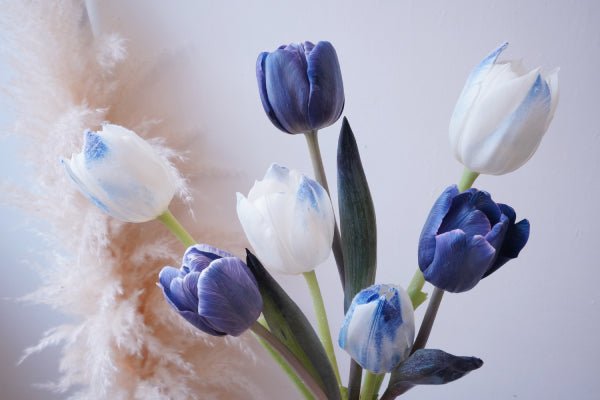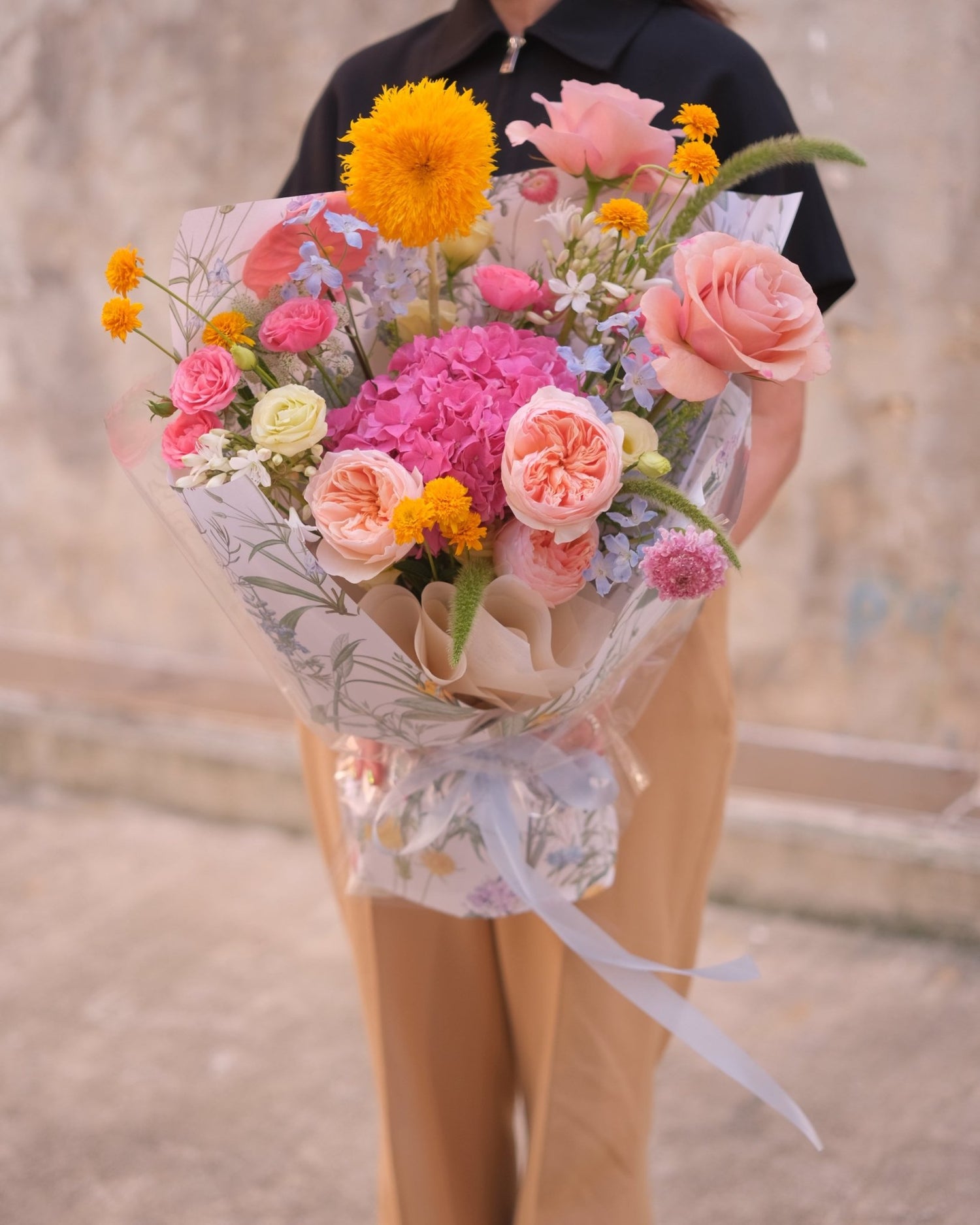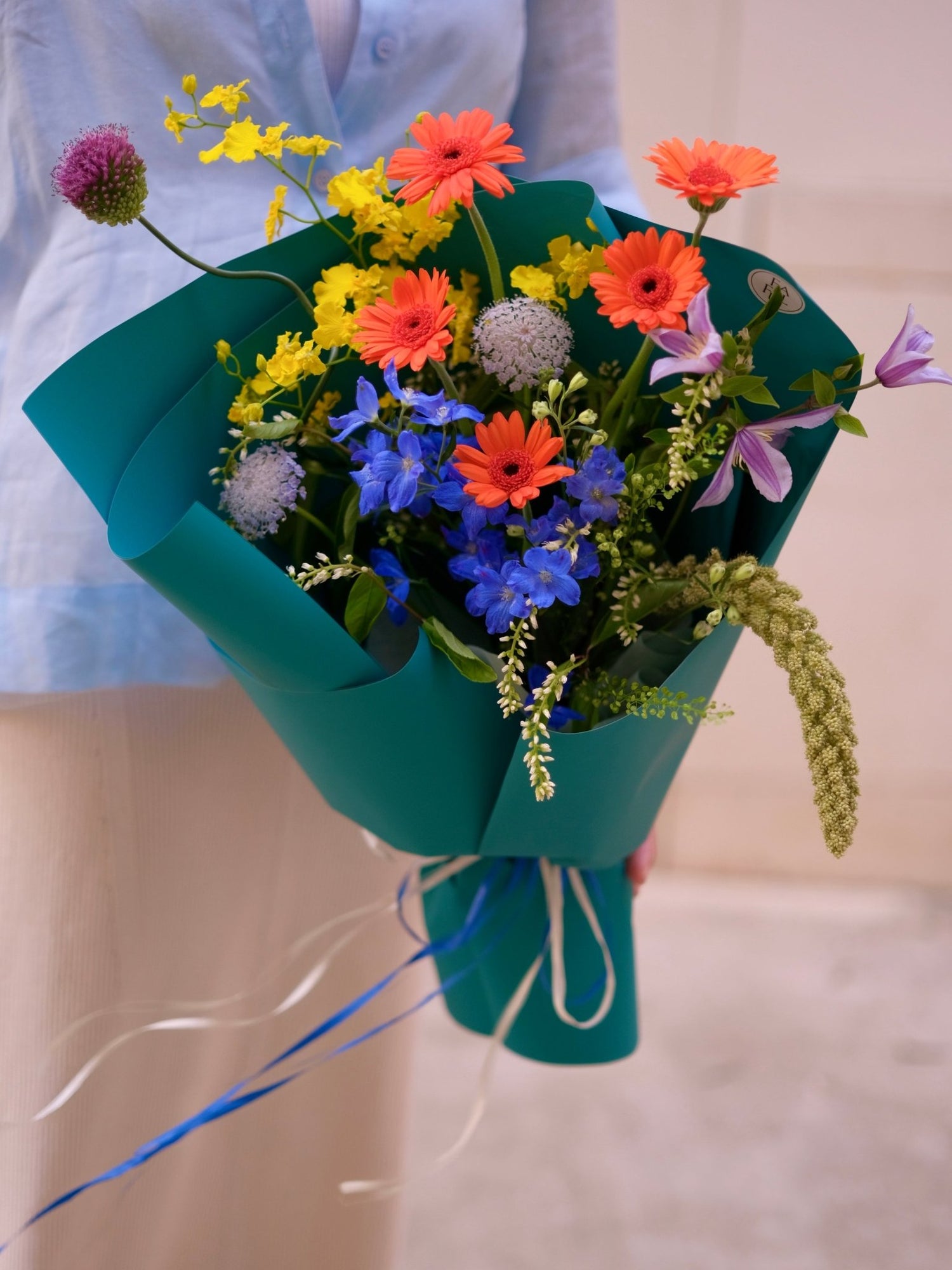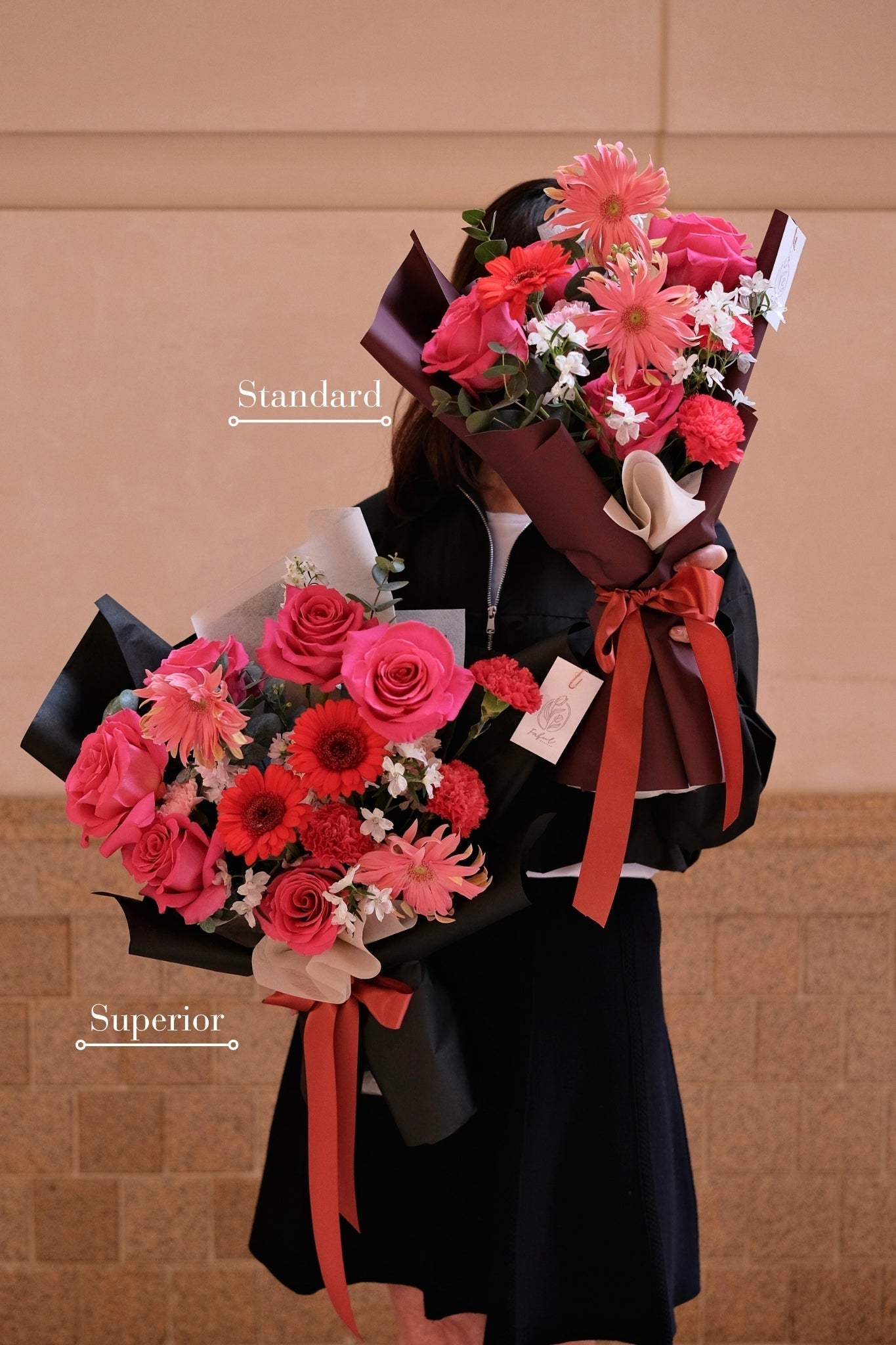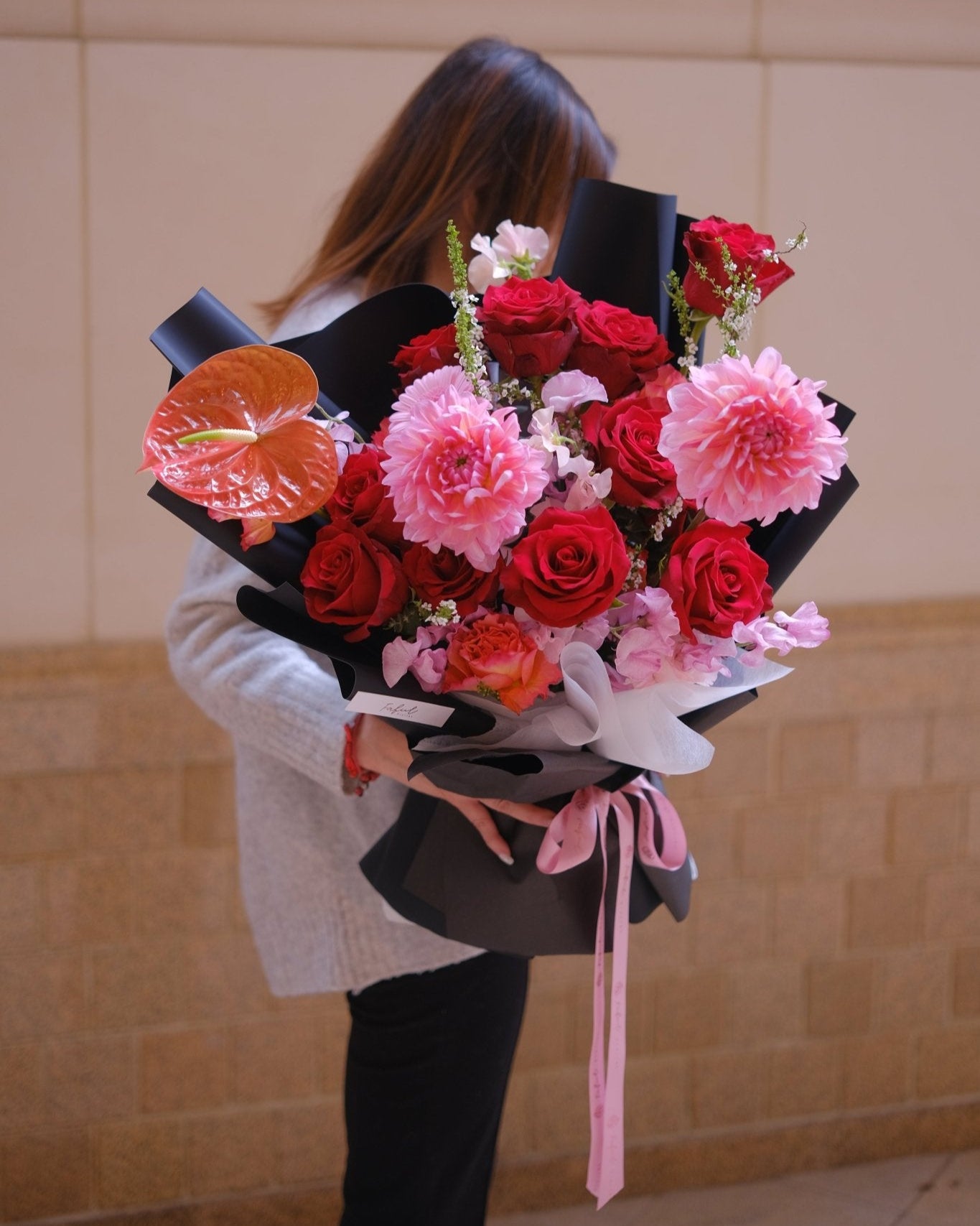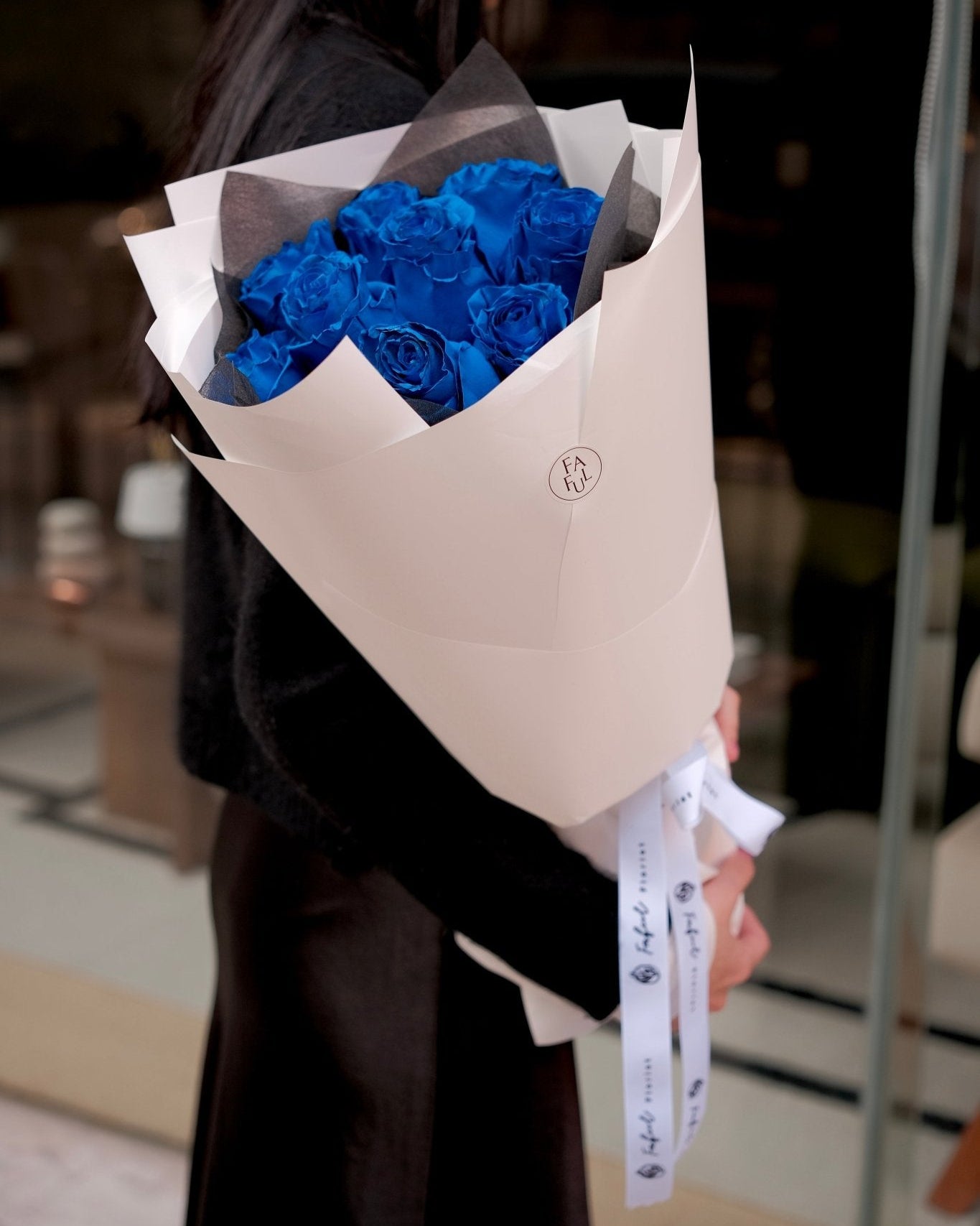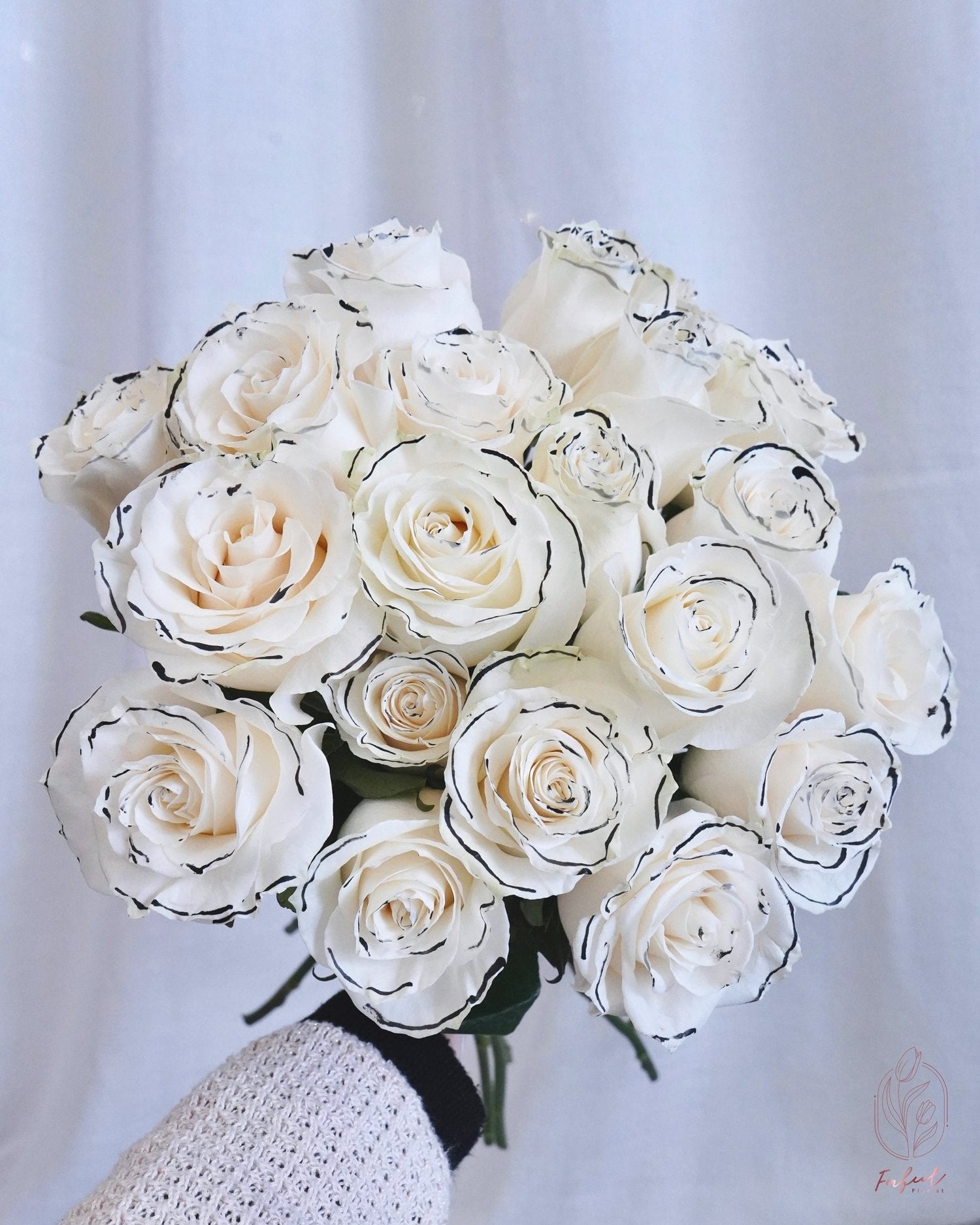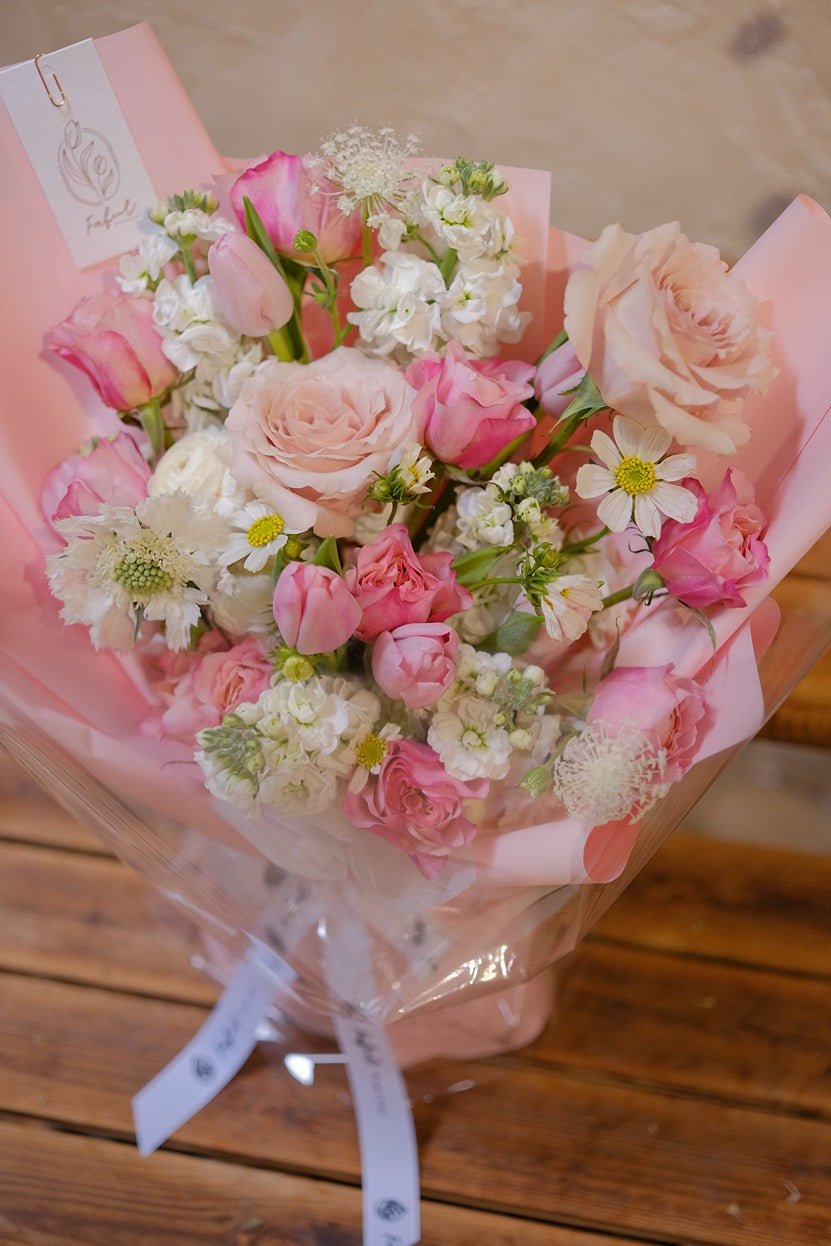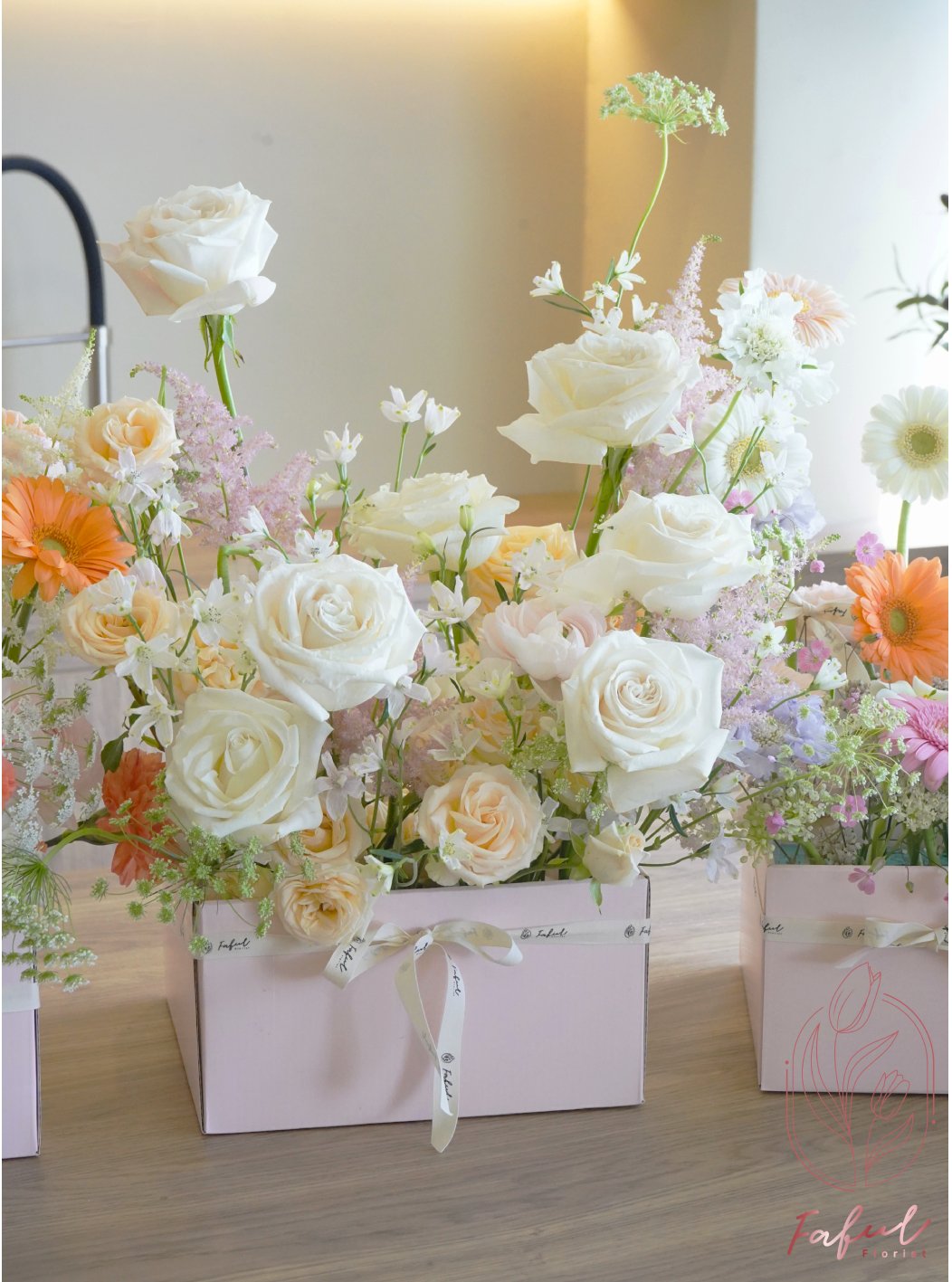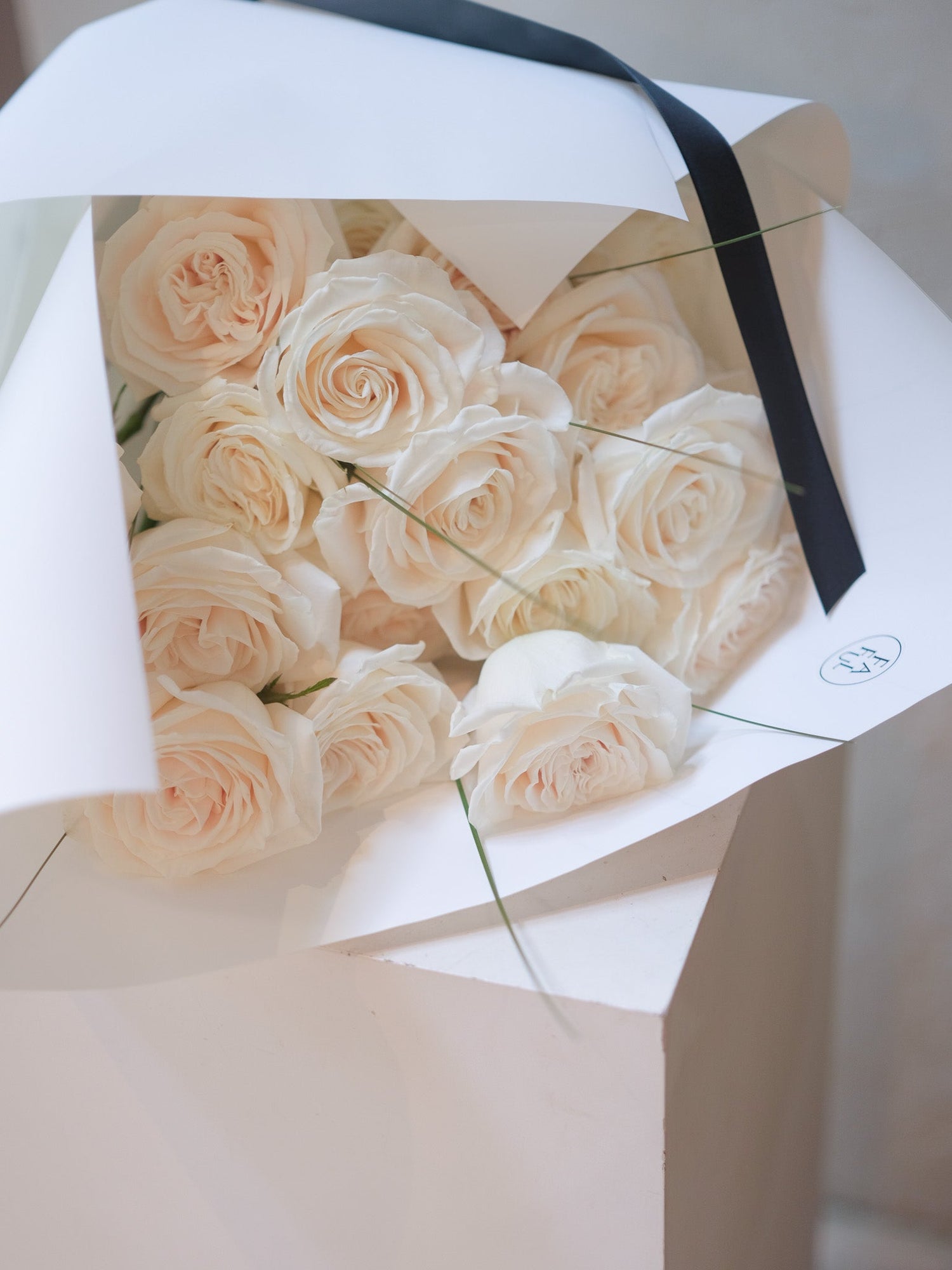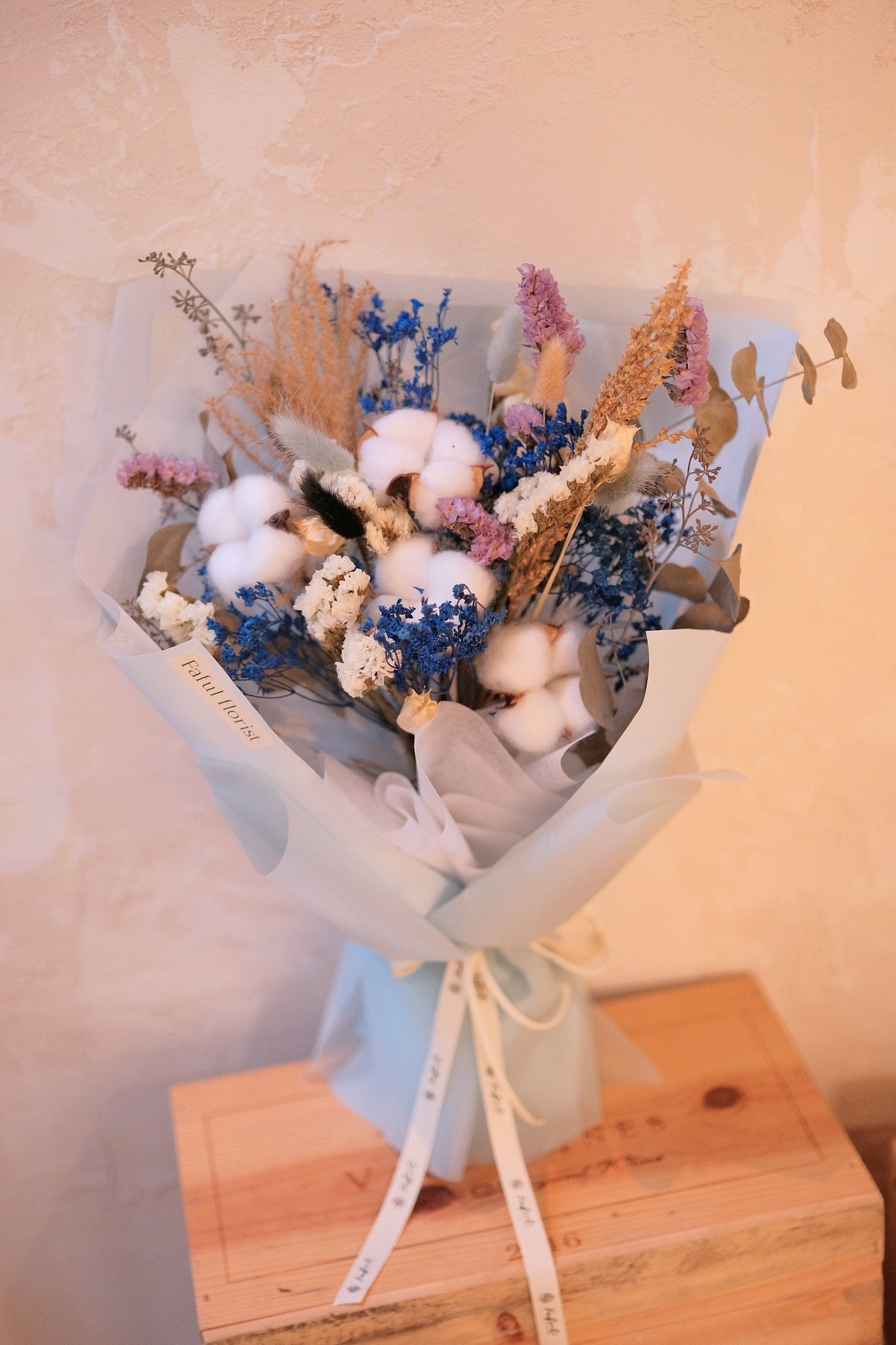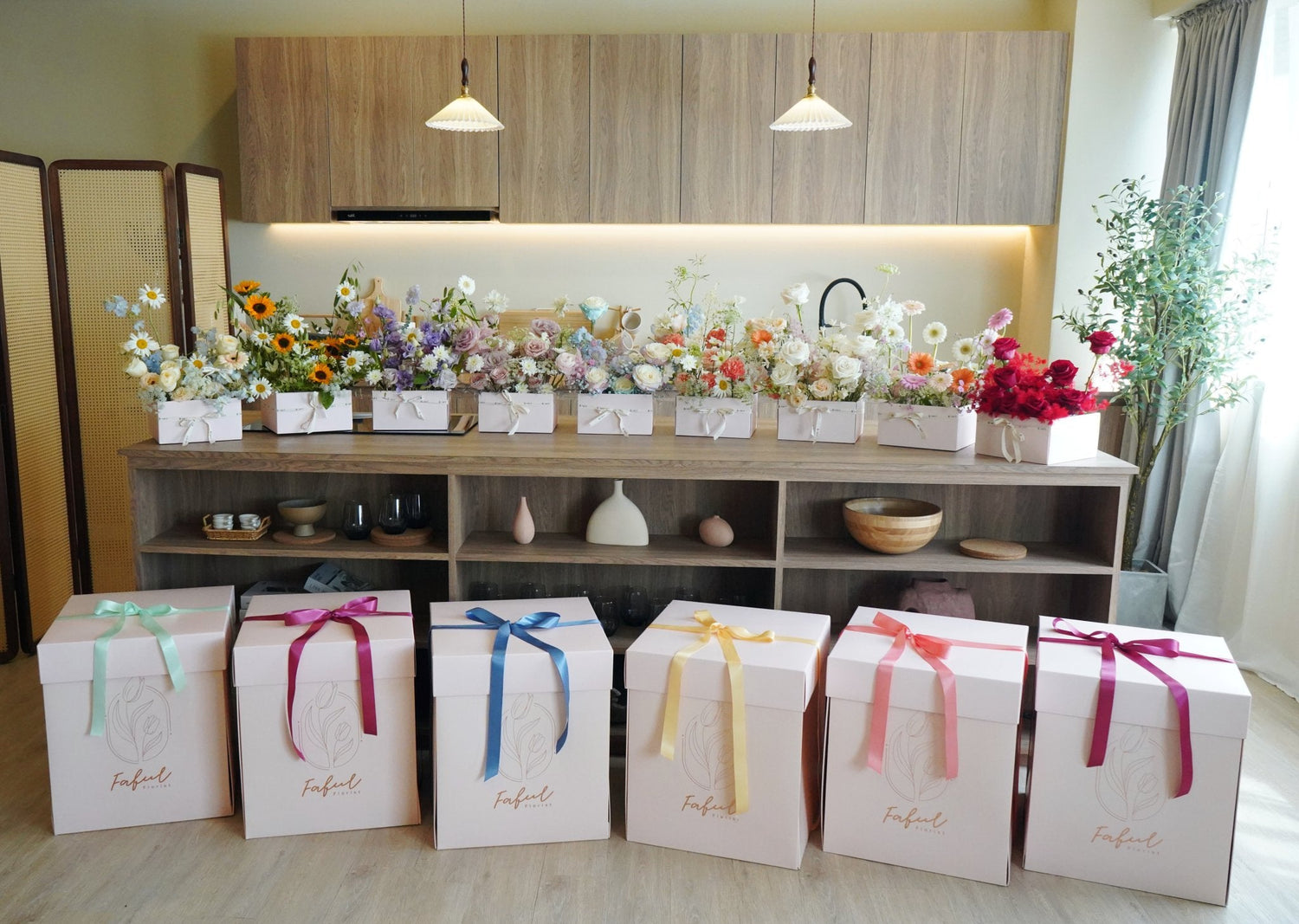
More Than Just for Qingming Festival - Unpacking the Diverse Chrysanthemum Meaning
Estimated reading time: 6 minutes
Table of Contents
- Introduction: Chrysanthemum—Autumn's Messenger
- General Flower Language of Chrysanthemum: Nobility, Longevity, and Hidden Sorrow
-
Colorful Meanings: Detailed Flower Language of Different Chrysanthemum Colors
- Red Chrysanthemum: Passionate Love
- Yellow Chrysanthemum: Complex Emotions—Remembrance, Blessings, and Taboos
- White Chrysanthemum: Purity, Mourning, and Respect
- Purple Chrysanthemum: Nobility, Mystery, and Blessings
- Pink Chrysanthemum: Gentleness, Romance, and Motherhood
- Orange Chrysanthemum: Vitality, Enthusiasm, and Joy
- Green Chrysanthemum: Vitality, Hope, and Health
- Deep Cultural Significance of Chrysanthemum
- Chrysanthemum in Hong Kong: Presence and Flower Language Meaning in Daily Life and Festivals
- Chrysanthemum Planting and Care
- Conclusion: Understanding Chrysanthemum meaning to Convey Appropriate Sentiments
- Quick Reference Table for Chrysanthemum meaning
Introduction: Chrysanthemum—Autumn's Messenger
As the autumn wind begins to rise and a hint of coolness permeates the air, when most flowers start to wither, one type of flower blooms proudly, adding splendid color and vibrant life to the bleak autumn days. This is the Chrysanthemum. Chrysanthemums are not only loved for their diverse forms and vibrant colors but also carry rich and profound cultural connotations and symbolic meanings. Especially in Eastern culture, the status of the chrysanthemum is significant. This article will delve into the fascinating "chrysanthemum meaning", from its general meaning to the subtle differences in various colors, to its symbolism across different cultures, combined with the local situation in Hong Kong, providing a comprehensive interpretation of the myriad languages of this autumn flower.

General Flower Language of Chrysanthemum: Nobility, Longevity, and Hidden Sorrow
As a flower with a long history, the Chrysanthemum's flower language is not singular but diverse and rich in variation. Generally, chrysanthemums are endowed with the following core symbolic meanings:
- Noble character and integrity: The chrysanthemum's characteristic of blooming proudly in the frost and defying the cold wind makes it a symbol of nobility, resilience, and seclusion. In ancient Chinese literature, chrysanthemums are often associated with scholars and poets, representing a spirit that does not curry favor with the powerful and maintains an independent personality.
- Longevity and auspiciousness: The character "菊" (jú, chrysanthemum) is a homophone for "久" (jiǔ, long-lasting). Therefore, in traditional culture, chrysanthemums are often regarded as a blessing for longevity. The custom of admiring chrysanthemums and drinking chrysanthemum wine during the Double Ninth Festival contains the beautiful wish for health and long life. Chrysanthemums blooming in the harvest season of autumn also carry the meaning of celebration and abundance.
- Joy and optimism: In many Western cultures, chrysanthemums (especially non-white and yellow ones) usually represent joy, positivity, and friendship. As the birth flower for November, it symbolizes optimism and lasting happiness.
- Sorrow and remembrance: This meaning is particularly important in East Asian cultures, especially in Chinese society. Specific colors of chrysanthemums (mainly white and yellow) are often used in occasions such as memorials and tomb-sweeping, expressing mourning and respect for the deceased. Therefore, special attention must be paid to the occasion and color choice when giving flowers to avoid misunderstandings.
The key to understanding chrysanthemum meaning lies in context. The same chrysanthemum can convey vastly different messages depending on the cultural background, color, and occasion. Next, we will focus on analyzing the specific flower language represented by different colored chrysanthemums.
Want to learn more about flower language? Further reading: Flower Language - The Hidden Symbolic Meaning Behind Flowers | Choose the Right Flower for the Right Person
Colorful Meanings: Detailed Flower Language of Different Chrysanthemum Colors
Chrysanthemums come in an extremely rich variety of colors, from pure white to passionate red, bright yellow to mysterious purple. Each color adds a unique connotation to the chrysanthemum’s meaning. Understanding these differences helps us use chrysanthemums more accurately to convey feelings.
Red Chrysanthemum: Passionate Love
Red, usually a symbol of love and passion, is no exception for red chrysanthemums. Its flower language mainly includes:
- Love and passion: Like red roses, red chrysanthemums can express deep and fervent love, suitable for gifting to a lover or expressing strong emotions.
- Celebration and vitality: Red represents auspiciousness and celebration in Chinese culture, so red chrysanthemums can also be used for celebratory occasions, adding a joyful atmosphere and conveying vitality and blessings.
Gifting red chrysanthemums can express "I love you" or deep affection. Compared to the romance of roses, the expression of love through red chrysanthemums may be more stable and lasting.
Yellow Chrysanthemum: Complex Emotions—Remembrance, Blessings, and Taboos
The flower language of yellow chrysanthemums is the most controversial, with significant differences between Eastern and Western cultures, requiring particular caution in Chinese society.

- Eastern Culture (especially Chinese society):
- Mourning and remembrance: This is the most widely known core flower language of yellow chrysanthemums in Hong Kong and mainland China. Traditionally, yellow chrysanthemums are often used together with white chrysanthemums for funerals, memorials, and tomb-sweeping (such as during the Qingming Festival and Double Ninth Festival), representing remembrance and respect for the deceased. Therefore, gifting yellow chrysanthemums on joyous occasions or when visiting the sick is considered very unlucky and impolite.
- Respect and nobility: In ancient times, yellow was the color of emperors, symbolizing nobility. The chrysanthemum itself also signifies nobility, so yellow chrysanthemums sometimes imply respect, but this usage is far less common than mourning.
- Mourning and remembrance: This is the most widely known core flower language of yellow chrysanthemums in Hong Kong and mainland China. Traditionally, yellow chrysanthemums are often used together with white chrysanthemums for funerals, memorials, and tomb-sweeping (such as during the Qingming Festival and Double Ninth Festival), representing remembrance and respect for the deceased. Therefore, gifting yellow chrysanthemums on joyous occasions or when visiting the sick is considered very unlucky and impolite.
- Western Culture:
- Sunshine, happiness, and friendship: In modern Western society (especially in the UK, US, Australia, etc.), yellow chrysanthemums are generally given positive meanings, bright like sunshine, representing happiness, friendship, and blessings.
- Historical negative connotations: In the Victorian language of flowers system, yellow chrysanthemums once had negative meanings, such as representing slighted love, but this usage is uncommon today.
- Sunshine, happiness, and friendship: In modern Western society (especially in the UK, US, Australia, etc.), yellow chrysanthemums are generally given positive meanings, bright like sunshine, representing happiness, friendship, and blessings.
Important reminder: In Hong Kong, pay close attention to the occasion when gifting yellow chrysanthemums. Unless it is a specific memorial occasion, yellow chrysanthemums should absolutely be avoided to prevent misunderstanding and displeasure. The regional differences in chrysanthemum meaning are vividly demonstrated here.
White Chrysanthemum: Purity, Mourning, and Respect
The flower language of white chrysanthemums also has a dual nature, coexisting purity and sorrow, requiring extra caution when used.
- Mourning and respect: Similar to yellow chrysanthemums, white chrysanthemums are the primary mourning flowers in East Asian culture (including Hong Kong). They are commonly used in funerals and tomb-sweeping to express sorrow, respect, and pure remembrance for the deceased. This is its most well-known flower language meaning.
- Purity, sincerity, and loyalty: In Western culture or some non-mourning Eastern contexts, white chrysanthemums symbolize flawless purity, honesty, truth, and steadfast love or friendship. Sometimes used in wedding decorations for their purity (but highly inappropriate in Hong Kong culture).
Important reminder: In Hong Kong, the mourning significance of white chrysanthemums far outweighs their purity meaning. Unless attending a funeral or tomb-sweeping, never casually gift white chrysanthemums, especially on joyous occasions, when visiting the sick, or visiting elders, as this is a serious cultural taboo.
Purple Chrysanthemum: Nobility, Mystery, and Blessings
Purple chrysanthemums combine the nobility and mystery of purple with the resilience of the chrysanthemum, and their flower language is generally positive:
- Nobility and elegance: Purple has been associated with royalty and nobility since ancient times, thus purple chrysanthemums carry connotations of nobility, elegance, and dignity.
- Mystery and charm: The deep purple color also endows the chrysanthemum with a touch of mystery and unique charm.
- Blessings and recovery: Purple chrysanthemums are also often used to express good wishes, especially hoping for the recipient's good health and speedy recovery. Suitable for visiting the sick (provided they are not paired with white or yellow, and the recipient doesn't mind).
Gifting purple chrysanthemums can express admiration for the recipient's character or send sincere blessings.

Pink Chrysanthemum: Gentleness, Romance, and Motherhood
Pink chrysanthemums exude a gentle and sweet aura, and their flower language is related to this:
- Gentle love and affection: Unlike the passion of red, pink chrysanthemums represent gentle, delicate love, slight affection, and care.
- Romance and attraction: Pink is also related to romance and can express attraction to someone or budding love.
- Longevity and blessings (for women): Pink is often associated with women. Gifting pink chrysanthemums to female elders can express wishes for their health, longevity, and enduring youth.
- Motherhood and care: The soft pink color sometimes also symbolizes the warmth and care of motherhood.
Pink chrysanthemums are a relatively safe and auspicious choice, suitable for various occasions, such as expressing affection, blessing female friends and relatives, etc.
Orange Chrysanthemum: Vitality, Enthusiasm, and Joy
Orange chrysanthemums are full of sunshine and vitality, conveying positive messages:
- Enthusiasm and vitality: Orange is an energetic color; orange chrysanthemums symbolize enthusiasm for life, a positive attitude, and boundless vitality.
- Joy and excitement: It can bring warmth and happy feelings, suitable for celebrating success or sharing moments of joy.
- Creativity and passion: Orange is sometimes associated with creativity and passion.
Gifting orange chrysanthemums can cheer someone up or share a sunny mood.
Green Chrysanthemum: Vitality, Hope, and Health
Green chrysanthemums are relatively rare, but their flower language is full of life:
- Vitality and renewal: Green is the color of nature, representing life, growth, and new beginnings.
- Hope and good luck: Green chrysanthemums symbolize hope, recovery, and the arrival of good fortune.
- Health and tranquility: It also implies health, balance, and inner peace.
Green chrysanthemums are unique and fresh, suitable for wishing recovery, celebrating new life, or expressing hopeful expectations for the future.
Deep Cultural Significance of Chrysanthemum
Chrysanthemums are not only noted for their flower language but also play important roles in different cultures.

Chinese Culture: Symbol of Seclusion, Nobility, and Longevity
In China, the cultural significance of chrysanthemums is long-standing:
- The reclusive gentleman: The famous line by Eastern Jin poet Tao Yuanming, "I pluck chrysanthemums under the eastern hedge, and serenely I gaze at the southern mountains," established the chrysanthemum's status as a symbol of seclusion, nobility, and indifference to fame and fortune. Chrysanthemum, along with plum blossom, orchid, and bamboo, are known as the "Four Gentlemen" (四君子), representing the ideal character of scholars.
- Double Ninth Festival (重陽節) Chrysanthemum: The Double Ninth Festival on the ninth day of the ninth lunar month is an important festival for admiring chrysanthemums, climbing heights, drinking chrysanthemum wine, and wearing dogwood. Chrysanthemums bloom in autumn, coinciding with the "double nine" yang numbers, and are endowed with the meaning of longevity.
- Medicinal and edible value: Chrysanthemums are not only for ornamental purposes but can also be used in medicine and cuisine. Chrysanthemum tea (菊花茶) clears heat, detoxifies, soothes the liver, and improves eyesight, making it a commonly used herbal tea in Hong Kong and mainland China. Hangzhou white chrysanthemum and Gongju are famous varieties used for medicine and tea.
- Artistic theme: Chrysanthemums are a common subject in traditional Chinese painting, poetry, and crafts. Artists express praise for its character or convey personal feelings by depicting chrysanthemums.
Japanese Culture: Imperial Family, Longevity, and National Flower
Chrysanthemums hold an equally esteemed position in Japanese culture:
- Imperial symbol: The stylized 16-petal double chrysanthemum (十六瓣八重表菊紋) is the Imperial Seal of Japan (Kikumon). The chrysanthemum is considered a symbol of the Japanese Imperial Family, representing nobility and authority. Chrysanthemum motifs can be seen on Japanese passport covers, medals, etc.
- One of the national flowers: Although cherry blossoms are more widely known, the chrysanthemum is actually also one of Japan's national flowers (not officially designated by law, but customarily ranked alongside cherry blossoms).
- Longevity and good luck: Similar to China, Japanese culture also regards the chrysanthemum as a symbol of longevity and good fortune. In ancient times, there were celebrations for "Kiku no Sekku" (菊の節句, Chrysanthemum Festival, i.e., the Double Ninth Festival).
- Appreciation culture: Japan has cultivated numerous chrysanthemum varieties, and chrysanthemum exhibitions are important cultural events in autumn.
It is worth noting that although Japanese culture reveres chrysanthemums, in some situations (like visiting the sick), gifting potted chrysanthemums (根付き鉢植え, nezuki hachiue) might be considered unlucky because its pronunciation is similar to "根付く" (nezuku), implying being bedridden (the illness taking root).

Western Culture: Joy, Optimism, and November Birth Flower
The symbolic meaning of chrysanthemums in Western culture is relatively more positive and relaxed, but regional differences exist:
- General positive meaning: In places like the UK, US, and Australia, chrysanthemums (especially warm colors like red, pink, orange) are seen as symbols of joy, optimism, friendship, and blessings. Often used for home decoration, celebrating birthdays, or expressing gratitude.
- November Birth Flower: Chrysanthemum is the representative flower for November, symbolizing that people born in this month are optimistic, long-lived, and loyal.
- Mourning (specific countries): In some European countries (such as France, Belgium, Italy, Spain, Poland, etc.), chrysanthemums (especially white ones) are traditionally closely associated with All Saints' Day and commemorating the dead, often used for cemetery decoration. Therefore, in these countries, gifting chrysanthemums (especially white varieties) on non-mourning occasions may cause discomfort.
It is evident that even within the West, regional differences exist in the flower language of chrysanthemums. Understanding these cultural backgrounds helps in using chrysanthemums appropriately in cross-cultural communication.

Chrysanthemum in Hong Kong: Presence and Flower Language Meaning in Daily Life and Festivals
In Hong Kong, the chrysanthemum is a common and important flower, its application and cultural significance are closely linked, especially having distinct local characteristics in terms of flower language:
- Festival Use:
- Qingming Festival (清明節) & Chung Yeung Festival (重陽節): These two festivals for ancestor worship and tomb-sweeping are when the demand for chrysanthemums is highest. Citizens buy large quantities of white and yellow chrysanthemums (sometimes also plain small chrysanthemums) to visit cemeteries or columbaria to pay respects to ancestors, expressing sorrow and respect. The Flower Market (花墟) is always filled with various types of chrysanthemums for worship before these two festivals.
- Lunar New Year: Although not the main flower, some brightly colored and auspicious chrysanthemums (like red, gold, purple Pompom Chrysanthemums) are also used as New Year flowers, placed at home to enhance the festive atmosphere, taking the meaning of "abundance" and "longevity". However, white and yellow should still be avoided.
- Qingming Festival (清明節) & Chung Yeung Festival (重陽節): These two festivals for ancestor worship and tomb-sweeping are when the demand for chrysanthemums is highest. Citizens buy large quantities of white and yellow chrysanthemums (sometimes also plain small chrysanthemums) to visit cemeteries or columbaria to pay respects to ancestors, expressing sorrow and respect. The Flower Market (花墟) is always filled with various types of chrysanthemums for worship before these two festivals.
- Daily Flowers and Flower Tea:
- Ornamental Varieties: Common chrysanthemum varieties seen in Hong Kong's Flower Market or florists include large single-stem chrysanthemums (like Ping Pong Mums, Pompom Mums), multi-headed small chrysanthemums (Spray Mum / Button Mum), etc. Brightly colored varieties are often used in bouquets or home decoration.
- Chrysanthemum Tea: Chrysanthemum tea is a very popular drink in Hong Kong. Whether in herbal tea shops, cafes (cha chaan tengs), or homemade, chrysanthemum tea is favored for its heat-clearing properties. Common types include Hangzhou white chrysanthemum, fetal chrysanthemum, etc.
- Ornamental Varieties: Common chrysanthemum varieties seen in Hong Kong's Flower Market or florists include large single-stem chrysanthemums (like Ping Pong Mums, Pompom Mums), multi-headed small chrysanthemums (Spray Mum / Button Mum), etc. Brightly colored varieties are often used in bouquets or home decoration.
- Gifting Taboos and Local Flower Language: In Hong Kong's flower gifting culture, the color taboos for chrysanthemums are particularly important. Therefore, in Hong Kong, understanding the specific flower language of chrysanthemums in different situations is crucial, especially regarding color taboos. Remember to absolutely avoid gifting white or yellow chrysanthemums on joyous occasions (such as weddings, birthdays, openings, visiting the sick, New Year visits). If unsure, choosing other flowers or brightly colored chrysanthemums (like pink, red, orange, purple) is relatively safer, but it is still recommended to first understand the recipient's preferences and cultural background.
Chrysanthemum Planting and Care
If you want to grow chrysanthemums at home and experience the joy of admiring them, you can pay attention to the following points:
- Choose Varieties: Select varieties suitable for potting that have some tolerance to Hong Kong's hot and humid climate. Small chrysanthemums or some dwarf varieties are relatively easy to manage.
- Sunlight: Chrysanthemums are sun-loving plants and require sufficient sunlight (at least 6 hours a day) to bloom well. Balconies or windowsills are ideal locations.
- Watering: Keep the soil moist but avoid waterlogging. Water when the soil surface feels dry, watering thoroughly until water drains from the bottom of the pot. In summer's high temperatures, water evaporates quickly, possibly requiring daily watering. Avoid watering the leaves in the evening to prevent diseases.
- Soil and Fertilizing: Use loose, well-draining soil. During the growing season, apply a diluted balanced liquid fertilizer or slow-release fertilizer every one to two weeks. Before flowering, switch to a fertilizer with a higher ratio of phosphorus and potassium to promote blooming.
- Pruning: Timely pinching (topping) can promote branching, making the plant fuller and producing more flowers. Promptly remove spent flowers after blooming to avoid consuming nutrients and help secondary blooming (for some varieties).
- Pest and Disease Control: Hong Kong's hot and humid environment is prone to aphids, spider mites, and powdery mildew. Observe carefully, maintain good ventilation, and treat promptly if found, using commercially available household insecticides or fungicides.
Chrysanthemums generally bloom in autumn. With proper care, you can enjoy beautiful chrysanthemums at home.

Conclusion: Understanding Chrysanthemum meaning to Convey Appropriate Sentiments
Chrysanthemum, the flower that blooms proudly in autumn, has a world of flower language far richer and more complex than we might imagine. From the general meanings of nobility, longevity, and joy, to the deep affection, sorrow, and blessings of specific colors, and the unique symbolism in different cultural backgrounds, the chrysanthemum carries diverse human emotions and hopes. Especially in Hong Kong, deeply influenced by Chinese culture, chrysanthemums play an indispensable role in memorial traditions, and the taboos associated with white and yellow flowers require our special attention.
Deeply understanding "chrysanthemum meaning" not only allows us to better appreciate this beautiful flower but also helps us choose the appropriate chrysanthemum color and variety for various occasions, accurately conveying our intentions and avoiding misunderstandings due to cultural differences or interpretation biases. Whether expressing love, sending blessings, showing respect, or conveying sorrow, understanding the language of the chrysanthemum allows this autumn elegance to bloom appropriately in the emotional exchanges between people.
Quick Reference Table for Chrysanthemum meaning
| Chrysanthemum Color | Main Flower Language (Distinguishing Cultural Background) | Applicable Occasions/Notes for Hong Kong |
|---|---|---|
| Red Chrysanthemum | Love, passion, celebration, vitality | Expressing love, celebratory events, adding a festive atmosphere. |
| Yellow Chrysanthemum | East/Hong Kong: Mourning, remembrance (primary), respect West: Sunshine, happiness, friendship (modern); slighted love (historical) |
Hong Kong: Mostly used for funerals, tomb-sweeping, and other memorial occasions. Strictly forbidden for celebrations, visiting the sick, visits. Western usage not applicable in Hong Kong. |
| White Chrysanthemum | East/Hong Kong: Mourning, respect (primary) West/Other: Purity, sincerity, loyalty |
Hong Kong: Primarily used for funerals, tomb-sweeping, and other memorial occasions. Strictly forbidden for general celebrations, visiting the sick, visits. |
| Purple Chrysanthemum | Nobility, elegance, mystery, blessings for recovery | Expressing admiration, blessings (including visiting the sick, consider recipient's acceptance), decoration. |
| Pink Chrysanthemum | Gentle love, romance, care, blessings for female longevity | Expressing affection, blessing female friends/relatives, Mother's Day, decoration. |
| Orange Chrysanthemum | Vitality, enthusiasm, joy, positivity | Celebrating success, encouragement, sharing happiness, decoration. |
| Green Chrysanthemum | Vitality, hope, health, good luck, renewal | Wishing recovery, celebrating new beginnings, hoping for good luck, unique decoration. |
Note: The above flower meanings are common interpretations. Actual application still needs to consider the specific context and individual feelings. Especially concerning white and yellow chrysanthemums, be sure to follow local Hong Kong cultural customs.

If you are captivated by the flower language of chrysanthemums, we invite you to continue browsing our flower shop and explore a whole new world of flowers!

